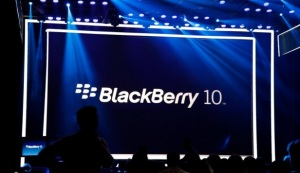 MicroBerry? BlackSoft? Neither! A partnership where Microsoft and BlackBerry exist as separate entities, but complement each others’ strengths is the best outcome for these two tech giants.
MicroBerry? BlackSoft? Neither! A partnership where Microsoft and BlackBerry exist as separate entities, but complement each others’ strengths is the best outcome for these two tech giants.
BlackBerry
– Get out of hardware; Nokia makes great hardware. A partnership where BlackBerry licenses BB10 to Microsoft so that it can be used on Nokia hardware would help both companies by freeing up resource for BlackBerry to focus on software, and by gaining Microsoft’s presence in the mobile market.
– Focus on software – create Windows 10 with QNX architecture and Windows Phone 10 with the best features of BB10 and WP8. This new mobile and desktop software would be used on exciting new Nokia hardware for phones, and third-party hardware for laptops, tablets (like current Windows 8 devices).
– Enhance current BB services like BES10 for enterprise device management and create the largest, most secure platform for this market. Microsoft is used in most businesses in one way or another, whether it’s in the set up of a business’ servers, email accounts, desktop/laptop devices, or cloud storage solutions. Tying their services into BlackBerry’s secure BES10 system would help expand both company’s presence in the enterprise market.
Microsoft
– Use presence in enterprise market to promote and expand BlackBerry’s Mobile Device Management (MDM) systems.
– DOMINATE enterprise almost immediately by tying BES10 into Microsoft services like Office 365, MS Exchange Active Sync, MS Servers, etc. Gain the reputation of ultimate security for businesses, as well as consumers.
– Improve the XBOX gaming experience by tying the XBOX OS into the Windows 10 QNX architecture for seamless integration between devices. Build XBOX OS as a layer of Windows 10 that can be accessed on any Windows 10 device – seamlessly. Use XBOX as the in-home connection to Windows 10 and integrate XBOX communication with the BB10 Hub so that your XBOX experience is as mobile as you are. Turn the XBOX device into a true home networking system with access to television content, networked files, apps, AND gaming.
Together
– create the ultimate solution to Mobile Business Management (MBM – – new term coined by the HeneyBlog)by creating the perfect synergy between mobile devices, business PCs and servers, and cloud services.
– Merge BBM and Skype to create the best mobile IM software on the market. Skype is miles ahead of BBM in terms of video/voice calling users, whereas BBM is miles ahead of Skype in terms of mobile Instant Messaging services. Working together, they can be the best consumer AND enterprise solution to messaging, conferencing and VOIP calling.
Extending into the Future
– expand on Microsoft’s Sync (Ford) for the ultimate in-car experience by utilizing QNX to its full potential. Self-driving cars, full mobile connections while driving, extending the mobile experience to the automobile.
– License BB10 to other partners to extend the experience to in-home services and appliances like televisions, etc.
Pros
– BlackBerry keeps software-related and R&D jobs in Canada and possibly brings in some additional jobs from Microsoft’s Windows team to work on the next iteration of Windows based on QNX architecture.
– BlackBerry maintains its presence in mobile (and could grow based on exciting new hardware that would come) and grows its presence in enterprise by attaching itself to Microsoft’s current reputation with small, medium and large businesses.
– Microsoft uses its recent acquisition of Nokia to build hardware that competes with the other top players in mobile. Microsoft extends its presence in Enterprise by offering an all-in-one solution for secure MDM using BES10 and existing MS services.
– Microsoft expands its presence in enterprise and in mobile
– Canadian economy doesn’t lose another tech giant and promotes growth in the technology field for future entrepreneurs.
Cons
– BlackBerry shifts solely to software, which could mean further job cuts (but should eventually create more jobs as the company expands to new services like PCs and MS Sync)
– Microsoft makes a drastic change to the architecture of Windows and takes a giant risk if they can’t execute it properly. They stake their reputation on QNX as being their OS of the future.
Final Thoughts
Though all of this sounds amazing, it is hard to imagine it all actually happening. In a perfect world, I think it already would have happened.
– Microsoft would have realized that teaming up with BlackBerry and QNX to create the Windows Phone OS would open their services to more users at launch, however, it has taken several years and iterations of Windows Phone for Microsoft to make any serious dent in the mobile industry.
– Microsoft would have realized that Windows built using QNX architecture would be an OS that would be second to none in terms of speed, efficiency and adaptability.
– BlackBerry would have realized that their focus should have been on the beauty of the QNX-based software, instead of focusing on releasing multiple BBOS devices that all did basically the same things. BlackBerry could have focused purely on software and BB10 could have launched much sooner.
– BlackBerry would have realized that consumers want exciting devices that not only connect them to their other devices and services, but that also extend their personal lives through multimedia apps, games and social networks.
Yes, it is true that none of this has happened yet. However, there is nothing preventing this from happening in the future. A deal where both companies exist on their own, while providing products and services that complement each others’ offerings, is a deal that consumers and businesses alike would truly benefit from.








